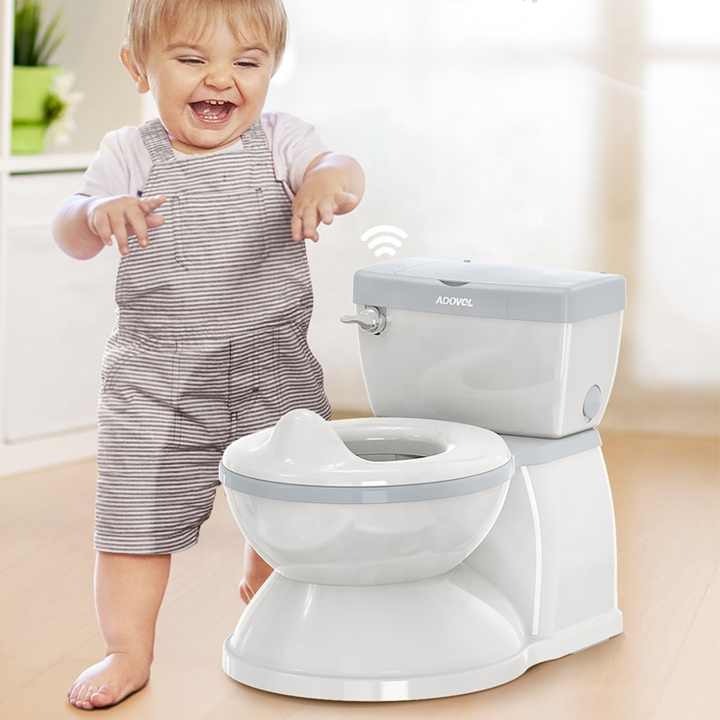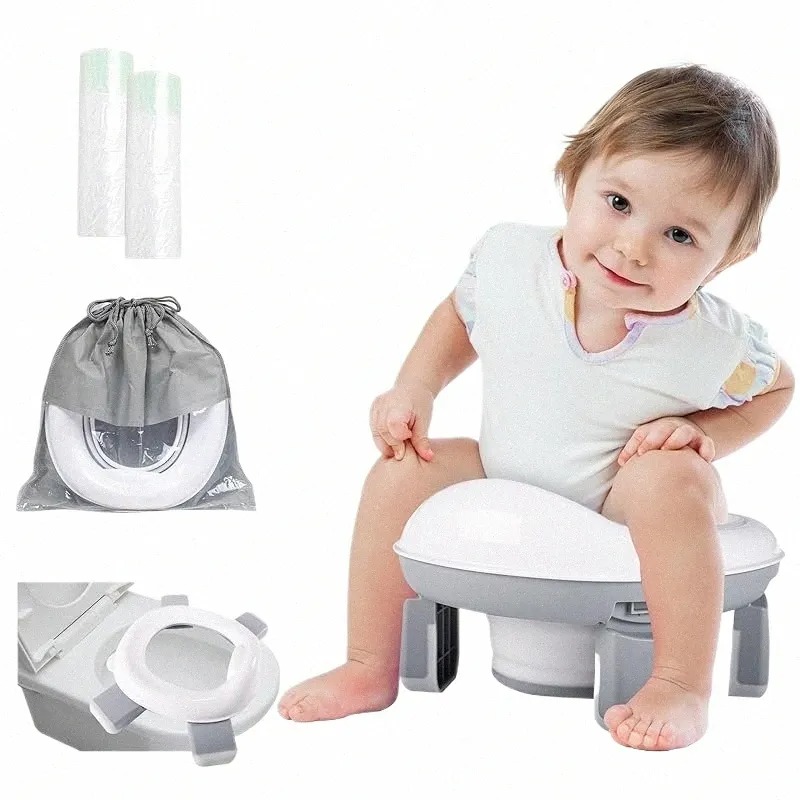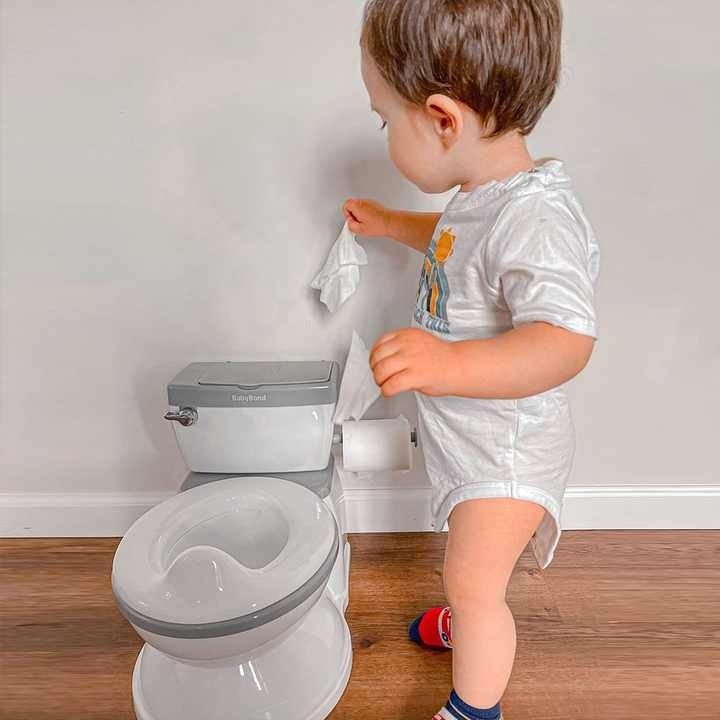Potty training is a significant milestone in a child’s development, marking the transition from diapers to greater independence. Selecting the right tools can make this journey smoother for both parents and children. The baby potty training toilet is one such essential tool that offers numerous benefits. Here’s an in-depth look into why this product stands out and how it can aid in effective potty training.
Introduction to Potty Training
Potty training is a major milestone in your baby’s development. It’s the process where toddlers learn to use the toilet independently. Timing is everything. And patience is crucial. The journey from diapers to using the potty involves several stages. While some toddlers may grasp potty training quickly, others take more time. It’s key to remember that each child is unique.
Before you start the baby potty training process, gather information and tools. You will need a child-friendly potty training toilet, patience, and a game plan. Throughout this guide, we’ll walk you through the methodical approach to potty training. We will highlight the signs that indicate your baby is ready to ditch the diapers. We will also provide you with a step-by-step process for introducing your toddler to the potty. And lastly, we share tips to tackle common challenges along the way. With the right preparation and mindset, baby potty training can be a positive experience for both you and your child.
Signs Your Baby Is Ready for Potty Training
Recognizing the right time to begin baby potty training is essential. Every child shows readiness in different ways. Look for these clear signs:
- Interest in the Potty: Your child may show curiosity about the potty training toilet or bathroom habits. They might follow you to the bathroom or ask questions about it.
- Discomfort with Dirty Diapers: If they become uncomfortable in wet or soiled diapers and want them changed right away, it indicates awareness of bodily functions.
- Predictable Bowel Movements: Regular and predictable bowel movements suggest your child’s readiness. It reflects that they have some control over their bladder and bowels.
- Communication Skills: Your baby should possess the ability to express when they need to go. This can be through words, facial expressions, or gestures.
- Ability to Follow Simple Instructions: Understanding and following basic commands show your toddler can manage simple potty training tasks.
- Independence for Basic Tasks: If your child shows interest in doing things ‘all by themselves’, such as pulling pants up and down, they’re exhibiting signs of readiness.
It’s crucial not to rush the process. Starting too early can make baby potty training more challenging. Wait for these indicators to ensure a smoother transition from diapers to using the baby potty training toilet. With patience and attentiveness, you’ll be able to pick up on these cues from your little one.
Choosing the Right Potty Training Toilet

Choosing the right baby potty training toilet is a crucial step. The toilet must be comfortable and safe for your toddler. Here are some tips to help you select the ideal potty:
- Child-Friendly Design: Look for a toilet with a fun design. A potty that appeals to your child can make training easier.
- Stability: Pick a potty that stands firm on the floor. It should not tip over when your child sits or moves.
- Comfort: Ensure the seat is the right size. Your child should be able to sit without feeling uneasy.
- Easy to Clean: A potty that is simple to clean will save you time. Hygiene is essential.
- Portability: Consider a lightweight and portable potty. You can move it around as needed.
A good fit helps your child transition smoothly from diapers. It builds confidence and encourages consistent use. Some parents choose a potty seat that fits onto the regular toilet. It can be a smart option for kids ready to make that leap. Remember to provide a footstool. It helps toddlers to climb up safely and support their feet.
Take your child with you when shopping for a potty. Giving them a say can boost their excitement. It makes them feel involved in the process. This step can lead to a positive potty training experience. With the right baby potty training toilet, your child will be on their way to independence.
Steps to Start Potty Training Your Baby
Starting potty training can feel overwhelming. But with a well-planned approach, you can simplify the process. Here are essential steps to begin training your baby on how to use the baby potty training toilet:
- Choose the Right Time: Start when your life is relatively calm. Avoid times of stress or big changes.
- Set a Routine: Consistency is key. Establish a routine for trips to the potty, particularly after meals and before bedtime.
- Dress for Success: Pick clothes that are easy to take off quickly. This helps your child succeed with less frustration.
- Introduce the Potty: Let your child explore the baby potty training toilet. Explain its use in simple terms.
- Encourage Regular Attempts: Even if your child does not need to go, sitting on the potty can build good habits.
- Celebrate Attempts: Praise effort, not just success. Any attempt is progress.
- Be Patient and Supportive: Expect accidents. Respond with encouragement, not disappointment.
- Use Training Pants: Consider training pants as a transitional step. They can reduce mess and provide comfort.
Remember, your positive attitude can greatly influence your child’s willingness to participate in potty training. With patience and persistence, your child will learn to use the toilet independently.
Common Challenges and Solutions in Potty Training
Despite your best efforts, you may encounter some hurdles during the baby potty training process. Here are some common issues parents face and practical solutions to overcome them:
- Resistance to Use the Potty: Sometimes, children may refuse to use the baby potty training toilet. To mitigate this, make potty time fun. Use games, books, or songs to encourage them. Remain calm and patient, offering praise for any small success.
- Fear of the Potty: A child might be scared to sit on the potty or hear the flush. To ease this fear, use a potty with a child-friendly design. Let them see you use the toilet and explain what’s happening. Over time they will likely become more comfortable.
- Accidents After Training: Accidents are normal. When they occur, stay positive. Reassure your child that it’s okay. Keep a change of clothes handy and gently remind them to use the potty next time.
- Difficulty with Bowel Movements: Some children may find it easier to wet the potty than to do a bowel movement. Encourage a high-fiber diet and plenty of fluids. These can help make bowel movements easier and less scary for your child.
- Nighttime Wetting: Nighttime control often comes last. Use waterproof mattress covers and training pants at night. Limit fluids before bedtime and ensure your child uses the potty before sleeping.
Remember, consistency and a positive, supportive approach will help your child through any difficulty. Every issue has a solution, and with time and patience, your child will master the baby potty training toilet.
Tips for Successful Potty Training

Achieving success in baby potty training requires attention to detail and a proactive approach. Here are some valuable tips to make the potty training journey smoother:
- Maintain Consistency: Be consistent with potty breaks. This helps cement the habit.
- Stay Positive: Cheer on every attempt. Focus on encouragement over criticism.
- Create a Reward System: Simple rewards can motivate. Stickers or extra playtime work well.
- Dress Appropriately: Easy-to-remove clothing is key. It fosters independence and reduces accidents.
- Communicate Openly: Talk about potty training. Make it a natural part of your child’s day.
- Lead by Example: Show them how it’s done. Kids learn by watching their parents.
- Stay Hydrated: Fluids are important. They create more opportunities for practice.
- Prepare for Outings: Have a travel potty ready. Don’t let outings disrupt the routine.
- Be Patient: Remember, each child is different. They will get it in their own time.
By following these tips and continuing to support your child through the process, you will help build their confidence and autonomy. Potty training is not just about leaving diapers behind; it’s a stepping stone towards greater self-reliance for your little one.
Transitioning from Potty to Toilet
Moving from a baby potty training toilet to a regular toilet is a significant step for toddlers. It signals that they have mastered the basics of potty training and are ready for greater independence. The transition should be as smooth as possible to reinforce their confidence and encourage continued success. Here’s how to facilitate this transition effectively:
- Start with a Potty Seat: A potty seat that attaches to the regular toilet can ease the transition. It should be sturdy and comfortable for your child.
- Use a Step Stool: A step stool helps children reach the toilet and feel secure. It provides support for their feet, empowering them to use the toilet comfortably.
- Incorporate the Transition Gradually: Begin by introducing the regular toilet gradually. Let your child sit on it with the potty seat for short periods.
- Maintain the Routine: Keep the potty training routine consistent. Encourage your child to notify you when they need to use the bathroom.
- Offer Reassurance: Praise your child’s efforts. Assure them that it’s normal to feel a bit unsure at first.
With time and encouragement, your child will adapt to the new routine and feel proud of their accomplishment. It’s a big step in their development, and with your support, they will become confident toilet users.
When to Seek Help: Potty Training Difficulties

Baby potty training can be a tough time for both parents and children. Sometimes, despite your best efforts, your child may not progress as expected. It’s important to know when to seek help during this phase of their development. Look for these signs that you might need extra support with potty training your child:
- Lack of Progress: If there’s no success after several months, consider seeking advice.
- Extensive Fear or Anxiety: If your child shows intense fear or distress towards the baby potty training toilet, it might be time to consult a specialist.
- Regression Without Clear Cause: Sudden and lasting regression in potty habits might require professional insight.
- Medical Symptoms: Look for signs of constipation or other medical issues that could hinder potty training.
- Age Consideration: By the age of four, if your child is not consistently using the potty, it’s advisable to talk to a pediatrician.
Remember, it’s not about ‘failing’ or ‘being behind’; it’s about supporting your child’s unique growth. If you face consistent challenges with baby potty training, don’t hesitate to reach out. Pediatricians, child psychologists, and pediatric urologists can provide help. They offer expert advice and strategies to navigate this part of your child’s journey. With the right help, your child will master the baby potty training toilet in time.




